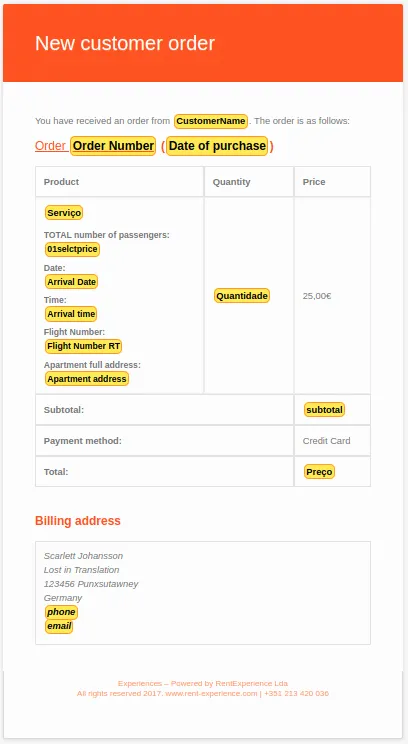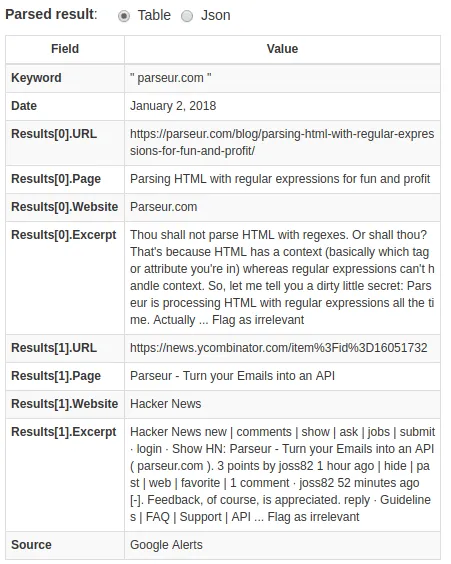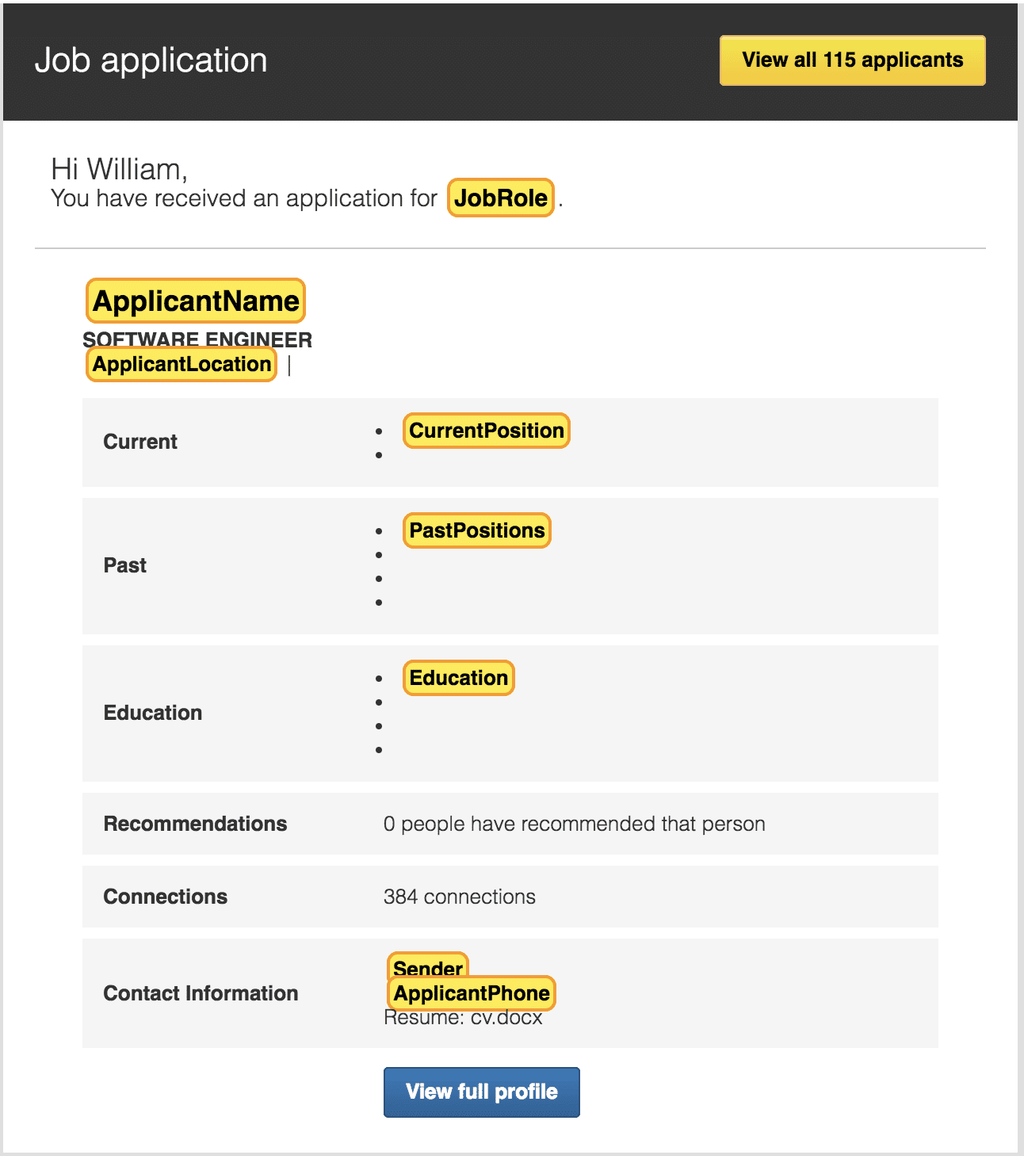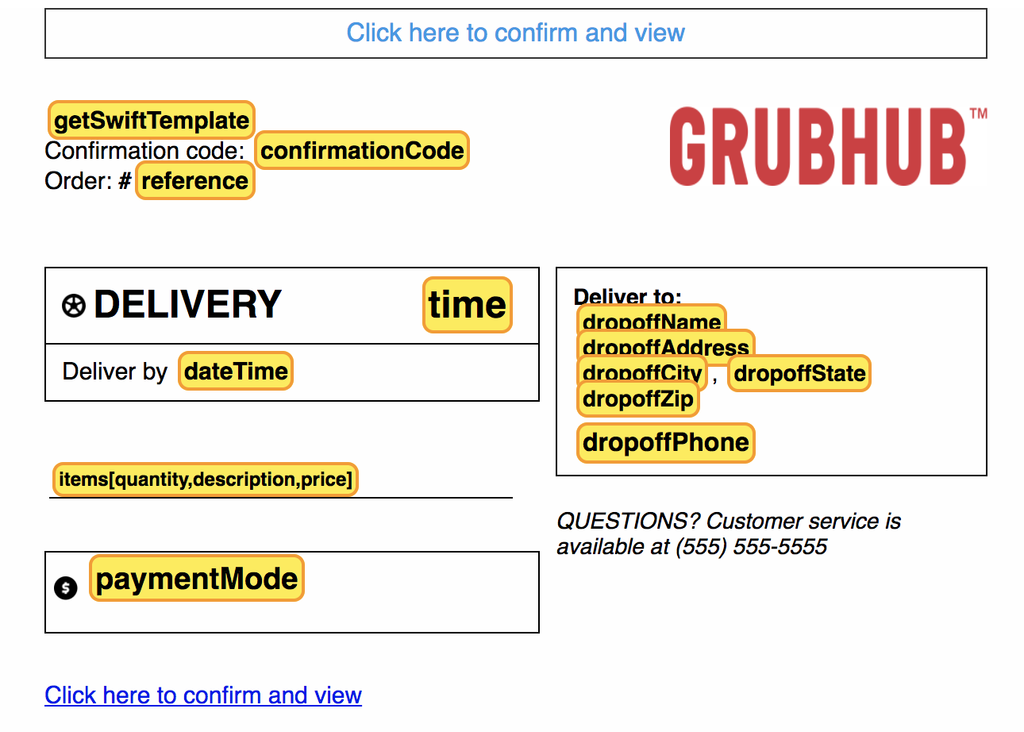At Parseur, our customers come from many industries and use our mail parser for a broad range of use cases. We wanted to make a list of the most common mail parser use cases we've seen. We hope it can give some ideas on how to further automate your business and lower operating costs.
Your business receives critical data in emails every day. A mail parser extracts this data automatically. It saves you time, money and improves your business reliability.
1. Process Customer Requests received by email
Companies have customers. Customers send companies requests. Handling customer requests is the most common example of why companies use a mail parser. Often, small businesses set up online forms or use platforms such as Wix that provide out-of-the-box forms. And every time a user submits a request, they receive it via email. Rather than manually inputting every email into their tracking tool, companies use mail parsers to do the data extraction job. Extracted data is then automatically fed into a Google Sheet or a CRM (for example).
Our customers use our mail parser system for handling many types of requests. Some of them we would never have guessed:
- service requests
- support requests
- online surveys
- appointments requests
- grant applications
- and even burning permit requests or waste removal requests!
Real life example: parsing travel service request emails
Rent-Experience is a Vacation Rental agency in Portugal. They also offer their guests extra services such as Airport pickups, Tours or Breakfasts at home.
For Rent-experience, a new customer order follows several steps:
- A user makes a new request on their WooCommerce-based website,
- WooCommerce automatically sends an email to Parseur
- Parseur automatically extracts the data.
- The data is consumed by several zaps in Zapier:
- One zap automatically sends all relevant information in an email to the right Service provider (the providers vary depending on the service requested)
- One zap creates a ticket in Teamwork Desk
- Other zaps update 3 different Google Sheets used for various tracking and auditing purposes
Doing all this work manually would be very time-consuming (let alone error prone and less reactive). With Parseur, Rent-Experience was able to easily automate their customer request workflow.

For more information, this article details how to use Parseur to process emails from Web Forms.
2. Automate Marketing Lead generation
A well-executed marketing strategy is a stepping stone of your product or business. It is vital that you attract and nurture your leads. The first step of a successful drip marketing campaign is to collect leads from your market niches.
You can collect leads from many channels:
- a newsletter subscription form on a landing page
- some partnerships
- on social networks
- via cold emailing
There are also some companies that can help you collect leads, like Drip, Leadpages or JustDial.
However, manually consolidating all your leads can become quite tedious. Instead, just setup a mail parser that will automatically collect all your lead emails, parse them and send the data into your marketing campaign workflow. For instance, you could automatically subscribe any new lead to a MailChimp email campaign.
Real life example: consolidate requests from Leadpages
One of our customer has a Leadpage form on his website. He uses Parseur to extract data from his Lead emails and feed them into his CRM.

3. Extract data from automated reports
Another common mail parser use case among Parseur users is extracting data from automatically generated reports. Those reports can be about user sign ups, domain ping reports, database backup reports, performance reports etc.
Of course, you can always manually copy and paste the data. But a mail parser can efficiently automate that without any manual involvement, so why would you even waste time in doing it manually?
Real life example: post Slack messages about website performance reports.
One of our users monitors his websites' performances hosted on Heroku using NewRelic. Every week, NewRelic sends a performance report for each of his server instances. Our customer uses Parseur to automatically extract performance metrics from the email report and post them on a Slack channel.

Parsed data is then sent to Zapier and used in a Zap that posts the following message on Slack:

4. Export Google Alerts to a spreadsheet
Google Alert emails are great to keep an eye of what's going on in your industry. But, if you have many alerts, it can become tedious to analyze trends. With a mail parser, you can convert all Google search alerts into data and log it in a spreadsheet for future analysis.
Parseur comes with a ready-made Google Alert template that will automatically process Google search alerts you send. All you have to do is create a new mailbox and forward your Google Alert emails to Parseur.

Our ready-made template will turn those emails into workable data:

Check this article for more information on Google Alerts parsing.
5. Parse digital invoices and receipts
Keying each and every invoice you receive into your company accounting system is always a lot of (very boring) work. Especially when you have to spend hours, or sometimes days, doing your month-end report.
Here again, a mail parser will help automatically process your recurring digital invoices. You can then download the parsed data as CSV and import it into your accounting system. Or send the data directly to your accounting system if it is connected to Zapier.
Real life example: Uber receipt data extraction
Here at Parseur, we often see users wanting to extract data from their Uber rides. We created a set of ready-made templates to extract data from the most common ride sharing platforms (Uber, Lyft, Juno, Curb etc).

6. Manage Real Estate inquiries
The real estate market is hot and competitive in many countries nowadays. For a swift sale or rent of a property, real estate agencies need to cross post their property ads on as many as online platforms as possible. For instance in the US, those platforms include Zillow, Trulia, Hotpads, StreetEasy, Apartments.com and other many smaller regional and local platforms.
When a user replies to an ad on one of those platforms, the agency receives an email with the user details. Then, agencies usually want to do one or all of the following:
- make sure to get back to the user as quickly as possible
- arrange a viewing date
- update their company calendar
- add the user details into their CRM for future communication about similar properties
Real-life example: Automate Zillow customer questions into your favorite CRM
Manually sorting out inquiry emails and adding information into the agency applications it very time-consuming. It has low added value and is error prone (one can easily miss an email at peak times).
Setting up a mail parser for real estate agencies can completely automate this workflow:
- the agency receive the inquiry from a real estate platform by email and automatically forward it to their mail parser.
- the mail parser extracts the relevant data from the email.
- the mail parser then sends that data to their connected applications or CRM.
At Parseur, several customers are either real estate agencies or SaaS companies in the real estate space. We created a set of ready-made templates for Real Estate so that they can automatically parse real estate inquiries for the most common platforms.

7. Handle Accommodation Bookings
In the hospitality industry, emails are still the main booking channel. And nowadays, thanks to websites like Airbnb, more and more small businesses and property owners enter the accommodation business economy and want to extract booking information from emails.
Real life example: centralize bookings made on third-party booking platforms
Our customer, Roomfilla offers a property management platform for property owners. On top of offering a web presence with a dedicated website for booking properties. Roomfilla also offers to list the properties on reputable accommodation booking websites such as Airbnb, HomeAway, Ctrip etc.
Roomfilla uses Parseur to process all incoming bookings emails from third party platforms for each stage of the booking:
- Confirmed booking creates an email which is pushed to Parseur automatically
- From this email guest details, check in and check out dates, full amount of the payout and the direct message link to the guest are extracted.
- Data is then pushed to Slack with all the details to say a new confirmed booking was made for the team to see.
- The details are then added to Pipedrive (CRM) and an action is created based on the check in date so that details can be sent to the guest 7 days prior.
- The value is added to the deal in the CRM so Roomfilla can get a quick overview of exactly how much cash is working through the different deals.
- Finally, details are pushed onto a spreadsheet where a booking PDF is auto generated and attached to the guest details in Pipedrive.
It works well for us because it gives us a quick and simple workflow that keeps on top of bookings. Everything is logged in Pipedrive and everything has an activity on it so nothing will be missed. It is also great to have the information dissected from the email as we can then use it to lookup terms in a google sheet and expand on that with what is in the rest of the row (more of a case in our pending workflow).
- Stuart Lansdale, owner of Roomfilla

Refer to the following article for more information.
8. Track e-commerce purchases and sales
Another one of the mail parser use cases we see often here at Parseur is about processing e-commerce purchases and sales receipts. For example as a seller, if you sell your products on different online platforms, Parseur can help you consolidate all your sales into a single workflow by have a mailbox with one template per platform. Parseur can also help with delivery logistics for freight forwarders.
Real life example: manage freight forwarding
4B2.com operates a website that allows people from Russia to purchase goods from any online shop in Germany, even if the shop doesn't deliver to Russia. 4B2 is a freight forwarder. It takes care of receiving the goods locally in Germany and then re-expedite them to their Russian customers. They are filling the necessary paperwork in the meantime and taking care of the logistics.
4B2 uses Parseur to automate the data extraction from online purchase receipts of their clients and feed it into their back end website for tracking purposes.

9. Consolidate applications to job openings
Nowadays if your company wants to attract the best talents, you need to make sure your job openings are as visible as possible. For that matter, you need to cross post your jobs ads on many recruitment websites (such as LinkedIn, Indeed, CareerBuilder etc.). Unfortunately each website has its own way of managing job applications. And, as a recruiter, it can quickly become a nightmare to have to consolidate job applications from all platforms into a single repository for the first screening.
Real-life example: Automated LinkedIn Job application collection
Here again, a mail parser can save countless hours of work. Our customers use Parseur to process and consolidate all job applications from various recruiting platforms into a common data set. Our customers forward all their job applications to their Parseur mailbox and create a template for each platform they work with (or use our ready-made templates for job application). Thanks to Parseur multi-template feature, every time a new application email comes in, Parseur will automatically pick the right template and extract the relevant data.
Then, they either download their data as Excel, send it to a Google Sheet or send it to a dedicated recruitment application like Zoho Recruit.

For more information, this article will detail how to set up Parseur for Job Applications.
10. Manage Food Deliveries
This is one of those mail parser use cases that we would never have thought of. But it turned out to be one of the most popular use case!
Food Delivery is booming. Many online platforms are competing for the user's attention to order food from. Unfortunately, that can turn into a bit of a headache for restaurants and food delivery companies as they can be receiving orders from many platforms. And of course, time is the essence here, they have to deliver those orders as quickly as possible.
Without an automated workflow, restaurants have to consistently monitor their mailbox for new orders. For food delivery companies contracted by restaurants, the matter is even more complex. They have to constantly monitor each restaurant mailbox and manually enter each order into their delivery tracking app. For the larger delivery companies serving dozens of restaurants, that means having several full time employees dedicated to delivery order sorting and triaging.
Real-life example: automate Grubhub food delivery orders
With Parseur, Food delivery companies can automatically transform any incoming email order from any of their restaurants and from any ordering platform into data. Then, they can send that data as a new delivery job in their fleet management tool like onfleet, or Tookan. And all happens in less than a second upon receiving an order email!
By using Parseur, Food delivery companies and restaurants save countless hours of manual work every single day. What's more Parseur comes packed with dozens of ready-made delivery templates for the majority of the food delivery platforms.

What are your mail parser use cases?
We hope that this article shed an interesting light on how mail parser solutions like Parseur. A mail parser solution can transform your business, making it more time and cost-efficient.
We love talking to our customers and better understand their industry. As a matter of fact, we are always fascinated to discover and learn about some very niche businesses our customers carved for themselves. Especially when we can help those companies automate their workflows!
What about your business? Are you receiving specific emails on a daily basis that you need to extract data from? How can a mail parser help you?
If you think Parseur can help, don't hesitate and get in touch with us!
Last updated on




